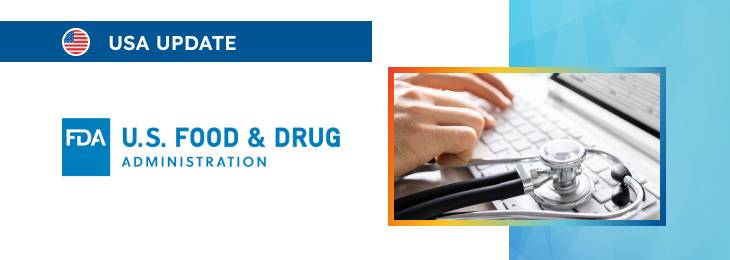
Table of content
In particular, the document describes the aspects related to evaluating Automatic Class III Designation. It provides an overview of the applicable regulatory requirements, as well as additional recommendations and clarifications to be taken into consideration by medical device manufacturers and other parties involved to ensure compliance with it.
At the same time, provisions of the guidance are non-binding in their legal nature, nor are they intended to introduce new rules or impose new obligations.
Moreover, the authority explicitly states that an alternative approach could be applied, provided such an approach is in line with the existing legal framework. It has been agreed with the authority in advance.
Introduction
The present document constitutes a comprehensive guide for both the industry and the authority staff on the procedural aspects of submitting and reviewing a De Novo classification request as per section 513(f)(2) of the Federal Food, Drug, and Cosmetic Act (FD&C Act).
The De Novo process outlines a regulatory pathway for medical devices of Class I or Class II under the existing classification rules, which lacks a legally marketed predicate making it impossible to follow the standard approach. In such cases, the said framework assures safety and effectiveness through general or general and special controls.
The document also emphasises the important role of the Center for Devices and Radiological Health (CDRH) or the Center for Biologics Evaluation and Research (CBER), which are integral to the review and decision-making in the De Novo classification process.

Regulatory Background
The document outlines the regulatory landscape for medical devices, focusing on those classified under Class III requiring premarket approval (PMA). Devices can fall into Class III through various regulatory means, primarily due to their risk level and the insufficiency of general and special controls to ensure their safety and effectiveness.
The enactment of section 513(f)(2) of the FD&C Act, under the Food and Drug Administration Modernization Act of 1997 (FDAMA), introduced the De Novo classification process.
This process was designed to streamline the pathway to market for new types of medical devices, automatically classified into Class III under the existing risk-based classification, but that could demonstrate safety and effectiveness through general or special controls without the need for a predicate device.
Significant legislative and regulatory milestones have impacted the De Novo process, allowing for more flexible submission criteria.
The 21st Century Cures Act and the subsequent modifications under the Food and Drug Administration Safety and Innovation Act (FDASIA) have refined the process, eliminating the necessity for a device to be reviewed under a 510(k) and found not substantially equivalent (NSE) before a De Novo request.
The issuance of a final rule on October 5, 2021, introduced detailed procedures and criteria for the De Novo classification process, reflected in new regulations at 21 CFR Part 860, Subpart D.
These updates are intended to clarify and facilitate interactions between the FDA and request submitters, ensuring a smooth pathway for innovative medical devices through the De Novo classification process.
De Novo Request Submission
The document further describes in detail the key aspects of De Novo Requests and the procedures associated with the submission.
According to the guidance, De Novo’s request submission entails a comprehensive preparation phase, where the submitter evaluates the appropriateness of their device for Class I or Class II classification, particularly in the absence of a legally marketed predicate.
The updated guidance simplifies the submission process, allowing for a “Direct De Novo” route without requiring an NSE determination from a 510(k) submission.
The document also delineates the specific information and documentation necessary for a substantive review of a De Novo request.
It emphasizes the importance of thorough and precise submission to facilitate the evaluation process, ensuring that the device meets the applicable statutory criteria for safety and effectiveness.
FDA Review and Regulatory Decision-Making Process
Upon receiving a De Novo request, the FDA commences a detailed evaluation process, assessing the device against established safety and effectiveness criteria.
The relevant section of the guidance offers insight into the procedural aspects of the review, including timelines, interactions with the submitter, and considerations for FDA staff during the decision-making process.
The conclusions of the review process can lead to a reclassification of the device into Class I or Class II, thereby allowing it to enter the market with specified controls.
The document explains the potential outcomes of the De Novo process, including the implications for the device’s regulatory status and the broader impact on the medical device industry.
Conclusion
The present FDA guidance highlights the critical aspects of the De Novo framework to streamline and facilitate regulatory processes and procedures to be followed when applying for marketing approval related to novel medical devices.
The said framework is intended to ensure the proper balance between supporting the development and use of medical devices employing innovative technologies and ensuring the safety of patients.
How Can RegDesk Help?
RegDesk is a holistic Regulatory Information Management System that provides medical device and pharma companies with regulatory intelligence for over 120 markets worldwide. It can help you prepare and publish global applications, manage standards, run change assessments, and obtain real-time alerts on regulatory changes through a centralized platform. Our clients also have access to our network of over 4000 compliance experts worldwide to obtain verification on critical questions. Global expansion has never been this simple.

